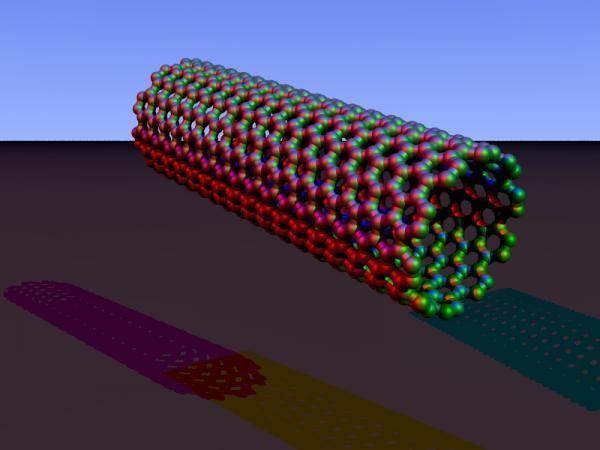This is a non-toxic natural method for breaking down carbon nanotubes, a finding that could help reduce health and environmental concerns from the use of the important substances

Researchers from the University of Pittsburgh have developed the world's first non-toxic natural method for breaking down carbon nanotubes, a finding that could help reduce health and environmental concerns from the use of these important materials in diverse fields, from electronics to plastics.
A team of researchers from the University of Pittsburgh discovered that carbon nanotubes break down when exposed to the natural enzyme HRP (horseradish peroxidase), as described in an article recently published in the scientific journal "Nano Letters" and written by two professors from the university.
These findings open new horizons for the future development of safe and natural methods that use this enzyme or others like it for the purification of carbon nanotube contamination in the environment or in industry or in laboratory complexes.
Carbon nanotubes are monoatomic cylinders of graphite, a hundred thousand times smaller than a human hair but stronger than steel, and are excellent conductors of electricity and heat. They strengthen plastics, ceramics and concrete; electrical conductors in electronics and energy conversion devices; And they are extremely sensitive chemical sensors, notes the lead researcher. The researcher himself developed a device for the early detection of short attacks (asthma) in which carbon nanotubes are able to detect tiny amounts of nitric oxide, a substance that appears before most of these attacks.
"The variety of applications of carbon nanotubes has led to their increased production, but their degree of toxicity still remains controversial," notes the researcher. "Accidental spills of nanotubes during their preparation are unavoidable, and the widespread use of carbon nanotube-based materials may lead to increased environmental contamination. We were able to demonstrate a non-toxic approach to successfully discharge carbon nanotubes under conditions similar to ambient conditions."
The group's research focused on the raw form of the nanotubes as a fine, graphite-like powder, explains the researcher. In this form, the nanotubes caused severe inflammation in the respiratory tract, especially in the lungs, in laboratory experiments. Although they are tiny in size, nanotubes contain thousands of atoms on the surface of their outer shell and these may react with the human body and its various organs in unknown ways, explains the researcher.
"Nanomaterials are still not fully understood. The various industries use nanotubes due to their uniqueness - they are strong, durable and can be used as semiconductors. However, do these characteristics also present us with health risks? The emerging field of nanotoxicology focuses on exactly this question," explains the researcher. "Earlier studies showed that they can be dangerous. We wanted to develop a safe method to neutralize these tiny substances in case they cause infections in nature or in the work environment."
To break down the nanotubes, the research team exposed them to a solution of the HRP enzyme and a low concentration of hydrogen peroxide at four degrees Celsius for 12 weeks. After its full development, this method could be used with the same ease as the existing methods for cleaning chemicals in laboratories are used today, explain the two main researchers.
